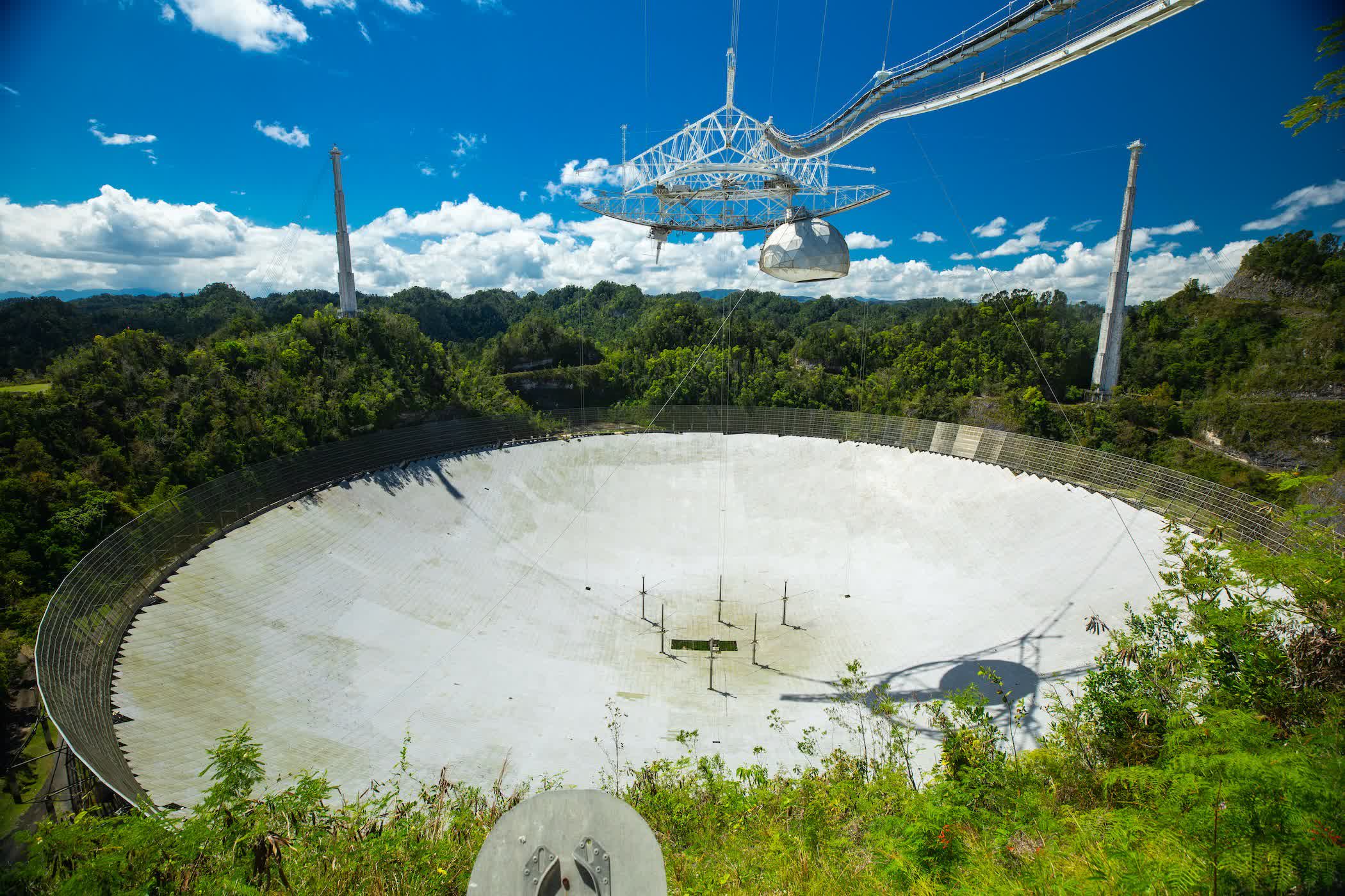What just happened? The Arecibo Radio Observatory located in Puerto Rico has collapsed sometime between late Monday evening and early Tuesday morning. The radio telescope has suffered multiple cable failures in the preceding months, and officials had cordoned it off for safety issues. Nobody was hurt in the collapse.

Last month, the National Science Foundation decided there was no safe way to repair Arecibo's support cables, which failed in August and again in November. The NSF determined it would be safer to take down the facility in a controlled demolition. However, before it could even schedule the decommission, the structure ultimately failed, sending the 900-ton platform suspended above the telescope's 1,000-foot dish crashing down.
Additional details regarding the collapse at the Arecibo Observatory’s 305-meter telescope are available now at NSF's site: https://t.co/dCYLolC22L
— National Science Foundation (@NSF) December 1, 2020
Engineers are on-site. Top priorities are maintaining safety at the site and assessing damage. pic.twitter.com/9mqnBx3dcU
"We are saddened by this situation but thankful that no one was hurt," said NSF Director Sethuraman Panchanathan in a statement. "Our focus is now on assessing the damage, finding ways to restore operations at other parts of the observatory, and working to continue supporting the scientific community and the people of Puerto Rico."
Muy tristes las fotos desde el Observatorio de Arecibo. pic.twitter.com/7gByZLdPFF
— Deborah Martorell (@DeborahTiempo) December 1, 2020
Ayer fue la última vez que visite esta belleza de lugar. Lamentablemente agonizaba. Aquí imágenes de ayer y hoy. pic.twitter.com/jWuAwtUc1s
— Deborah Martorell (@DeborahTiempo) December 1, 2020
The NSF's initial assessment is that the tops of the support towers suspending the platform gave way. Indeed, before-and-after pictures (see above tweets) from meteorologist Deborah Martorell show the tops of the surrounding structures appear to have broken off. Another image shows the radio dish utterly destroyed. The NSF is still assessing how to clear the site safely.
The Arecibo Radio Observatory was a research facility designed for various astronomy tasks, including tracking asteroids, but is more famous for its SETI (Search for Extra-Terrestrial Intelligence) work. Its iconic features were made famous in the 90s by the observatory's several appearances in pop-culture media, including the GoldenEye film (1995) and video game (1997), the movies Species (1995) and Contact (1997), and an episode of the television series The X-Files (1994).
Image credit: Mia2you